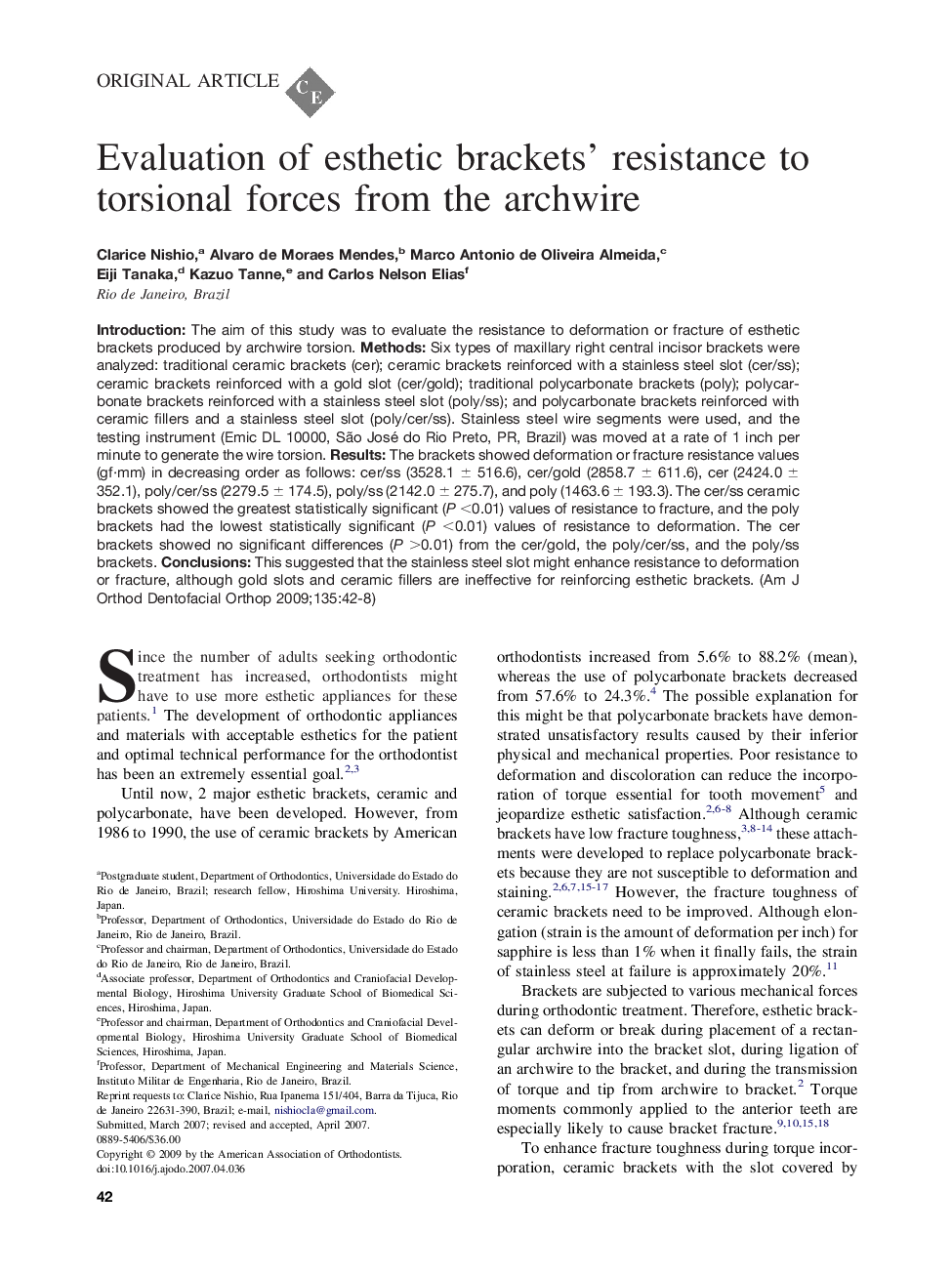| Article ID | Journal | Published Year | Pages | File Type |
|---|---|---|---|---|
| 3120074 | American Journal of Orthodontics and Dentofacial Orthopedics | 2009 | 7 Pages |
IntroductionThe aim of this study was to evaluate the resistance to deformation or fracture of esthetic brackets produced by archwire torsion.MethodsSix types of maxillary right central incisor brackets were analyzed: traditional ceramic brackets (cer); ceramic brackets reinforced with a stainless steel slot (cer/ss); ceramic brackets reinforced with a gold slot (cer/gold); traditional polycarbonate brackets (poly); polycarbonate brackets reinforced with a stainless steel slot (poly/ss); and polycarbonate brackets reinforced with ceramic fillers and a stainless steel slot (poly/cer/ss). Stainless steel wire segments were used, and the testing instrument (Emic DL 10000, São José do Rio Preto, PR, Brazil) was moved at a rate of 1 inch per minute to generate the wire torsion.ResultsThe brackets showed deformation or fracture resistance values (gf·mm) in decreasing order as follows: cer/ss (3528.1 ± 516.6), cer/gold (2858.7 ± 611.6), cer (2424.0 ± 352.1), poly/cer/ss (2279.5 ± 174.5), poly/ss (2142.0 ± 275.7), and poly (1463.6 ± 193.3). The cer/ss ceramic brackets showed the greatest statistically significant (P <0.01) values of resistance to fracture, and the poly brackets had the lowest statistically significant (P <0.01) values of resistance to deformation. The cer brackets showed no significant differences (P >0.01) from the cer/gold, the poly/cer/ss, and the poly/ss brackets.ConclusionsThis suggested that the stainless steel slot might enhance resistance to deformation or fracture, although gold slots and ceramic fillers are ineffective for reinforcing esthetic brackets.
